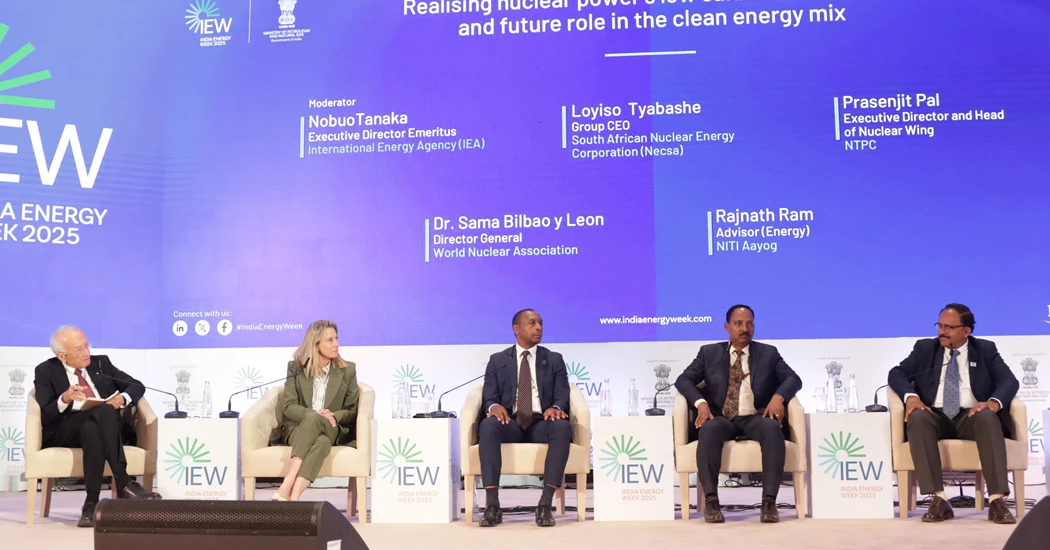New nuclear era promises clean energy security but work is required
A fresh generation of nuclear power plants are on course to join the world’s energy mix as the nations look to secure supplies and sustainability. And while there are some hurdles to overcome, panel session “Realising nuclear power’s low-carbon renaissance and future role in the clean energy mix” made largely positive noises on collaboration and acceptance.
Currently nuclear power delivers about 10% of the world’s electricity generation but is projected to triple global capacity by 2050. Some 65 new plants are under construction worldwide - 70GW in 15 countries, some new to nuclear - with up to 200 projects planned/moving forward, Dr. Sama Bilbao y León, Director General, World Nuclear Association said: “We are seeing very serious interest in nuclear energy everywhere in the world. “In the last two, three years we’ve seen many countries have recognised it is simply not possible to reach their goals in a sustainable, cost effective, timely and, very importantly, equitable manner, without nuclear energy.”
“Many are aware of the importance of being independent when it comes to energy…of sustainability concerns, whether it’s climate change or city pollution and then there is a part of equity - at least 100 million people don’t have access to any energy,” she added.
This is particularly applicable to Africa where only about 50% of people enjoy electricity, rising to 90% in South Africa which has two operating reactors and more planned.
“There’s got to be a nationalistic approach to energy security because different countries face different requirements,” said Loyiso Tyabashe, Group CEO, South African Nuclear Energy Corporation (Necsa).
He elaborated: “The main thing that bugs us about energy is energy access - before you talk about whether it’s cheap or carbon free. So nuclear does play a very important role in ensuring that ultimate objective for the continent - it provides energy security, available 24 hours a day.”
Small modular reactors (SMRs) are easier and cheaper to produce, overcoming the high construction costs and lengthy project lead times of traditional reactors, and can be customised for sectors such as cement and steel-making, desalination, even shipping.
Nuclear’s proven technology and near zero greenhouse gas emissions have the attention of India which has reactor growth amid plans to reduce current 80% fossil-based power production. Sh. Rajnath Ram, Advisor (Energy), NITI Aayog, said: “We are expecting by 2070 more than 200GW…that’s the horizon we are working to for building nuclear in the system.”
Prasenjit Pal, Executive Director and Head of the Nuclear Wing, NTPC, concurred that India’s energy security is “going to come from a basket of technologies.”
“What the government is now targeting is to slightly change the distribution so we have higher percentage of nuclear and therefore a slightly reduced carbon footprint for the entire energy matrix.”
Dr. Bilbao y León also highlighted the competitive cost of nuclear, with plant construction the largest part, while public acceptance remained strong in most territories.
Ram said campaigns in India were happening to drive a positive image and perception away from nuclear being associated with bombs.
Communication and collaboration, overall, were identified as key ingredients to nuclear adoption and growth. “We need to make sure that we intensify the collaboration…it is imperative,” said Tyabashe.
“But the most important thing I believe will help springboard nuclear technology forward is having a proper communication advocacy kind of system, that is a global network, because if a nation does it by itself, then you lose it.”
Pal echoed the sentiment and added: “If the world is going to be a progressive place, we definitely need to have a higher percentage of nuclear energy. Towards that extent, substantial cooperation and support would be required, and a proper supply chain needs to be established.”
Dr. Bilbao y León, who also called for more female participation in the nuclear industry, suggested it was actually ahead of other industries in international collaboration.
“We are very aware that we are in this together, that we all benefit from the successes of others, but also we will pay for the errors of others,” she added.
“The nuclear industry has historically had a fabulous record of collaboration; we share best practices and we also share opportunities for improvement. We continue to work together, because this is a team effort.”





